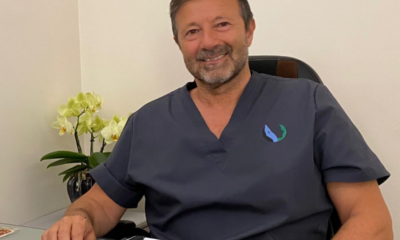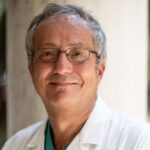Medical doctors and Surgeons
Pediatric plastic surgery: on the children’s side
«A child who has experienced pediatric plastic surgery heals better».
Ezio Gangemi, Specialist in Plastic, Aesthetic and Reconstructive Surgery, works at the Maria Vittoria Hospital of ASL Città di Torino of the Complex Structure of plastic surgery, hand surgery and microsurgery. In the interview he explains how establishing a trusting relationship with children and parents can help to achieve a good result in pediatric plastic surgery.
The interventions of pediatric plastic surgery
Gangemi explains that pediatric plastic surgery deals with skin diseases and soft tissues in children from 0 to 16 years old.
As the first objective of this surgery, in addition to the curative aspect, there is a particular attention to the restoration of the function and normal autonomy of the operated body district. It is important, in this field, both the functional and the aesthetic aspect.
For this reason, pediatric plastic surgery is a branch that can change the course of life of a newborn or adolescent. It acts both from the point of view of the patient’s growth, acting on a defect or a malformation, and from the psychological point of view. By restoring normal conditions, a boy is able to improve his social integration.
This type of surgery can work on malformation, trauma or large surfaces. Among the malformations on which it is possible to intervene are the craniofacial ones such as the labiopalatoschisis. However, this area can also affect hand malformations such as polydactyly, the webbed hand or the absence of the thumb. It is also suited in case of wavy ears or gynecomastia, which produce a high psychological response, or in the traumatological field on burns, animal bites, fractures and distortions. Finally, surface surgery can be performed for dermoid cysts, ingrown nail and ear malformations such as preauricular.
The post-operative in pediatric plastic surgery
It is necessary to make a premise: even if you intervene on a minor pathology, the child must always be asleep because of his young age especially in the case of even newborn children.
It is, therefore, necessary to have a structure with dedicated people, because after the surgery the patient must be kept in observation and needs about 2 or 3 hours to dispose of the drug used for anesthesia.
It is important to have a pediatric anesthesiologist, because the child must live the experience of surgery in a proper way and should not be frightened by what he has experienced.
Depending on the pathology to be treated, the post-operative path varies; in the case of malformations, a rehabilitation course is planned. If the malformations are more complex, more interventions are required. «This means establishing a bond with parents in order to achieve a good result», the surgeon continues.
In this way both the little patient and the parents play an active mediating role, which also produces a result on the intervention.




































